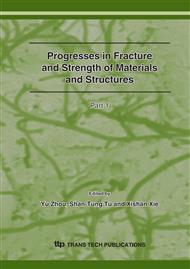p.491
p.495
p.499
p.503
p.507
p.511
p.515
p.519
p.523
Microstructure and High Temperature Stress Rupture Properties of Ru-Containing Directionally Solidified Ni-Base Superalloy
Abstract:
In this investigation, 3wt.% Ru was added to a low Cr and high W content superalloy with a nominal composition of Ni-10Co-1.5Cr-2.0Mo-1.0Nb-5.5Al-1.2Ti-0.1C-0.02B (wt.%) and both the Ru-free and the Ru-bearing alloys were directionally solidified. The multi-step heat treatment, thermal exposure and stress rupture test were performed. The results indicate that Ru is a weak positive segregation element (k’=Cinterdendrite / Cdendrite= 1.03). The solubility of Ru in γ phase is 30% higher than that of in γ' phase. Ru hardly enters into MC carbides, but can effectively retard the formation of M6C carbides. Ruthenium reduces the amount of eutectic (γ+γ'), decreases solid solution temperature of γ' phase, and promotes the rafting tendency of γ/γ' at elevated temperatures. Ru-bearing alloy possesses rather higher life at 1100°C/118MPa due to decrease of the film-like M6C carbides. The addition of Ru can inhibit the formation of M6C and eutectic γ', which hinder the initiation and propagation of cracks.
Info:
Periodical:
Pages:
507-510
Citation:
Online since:
September 2007
Authors:
Keywords:
Price:
Сopyright:
© 2007 Trans Tech Publications Ltd. All Rights Reserved
Share:
Citation:


